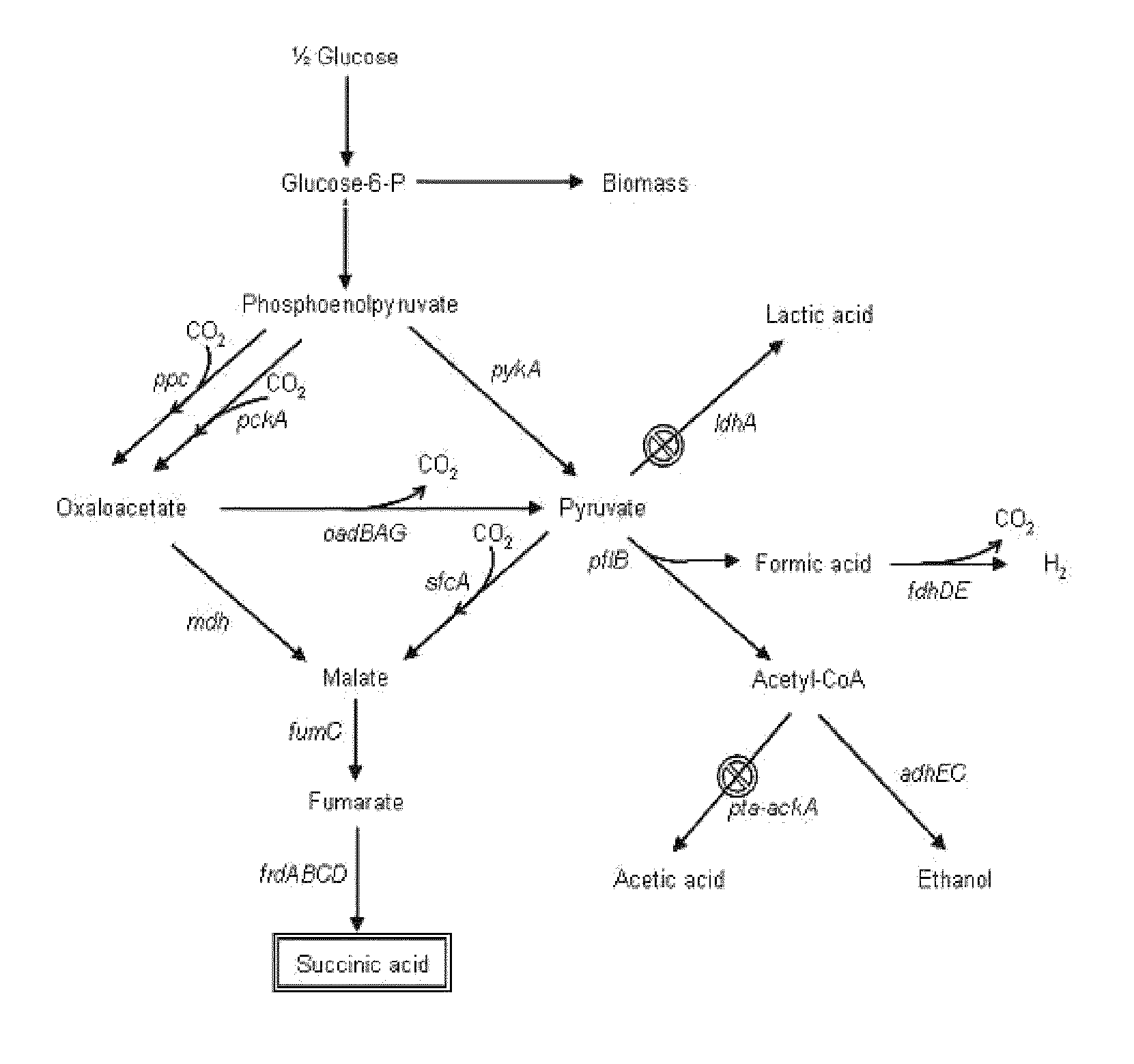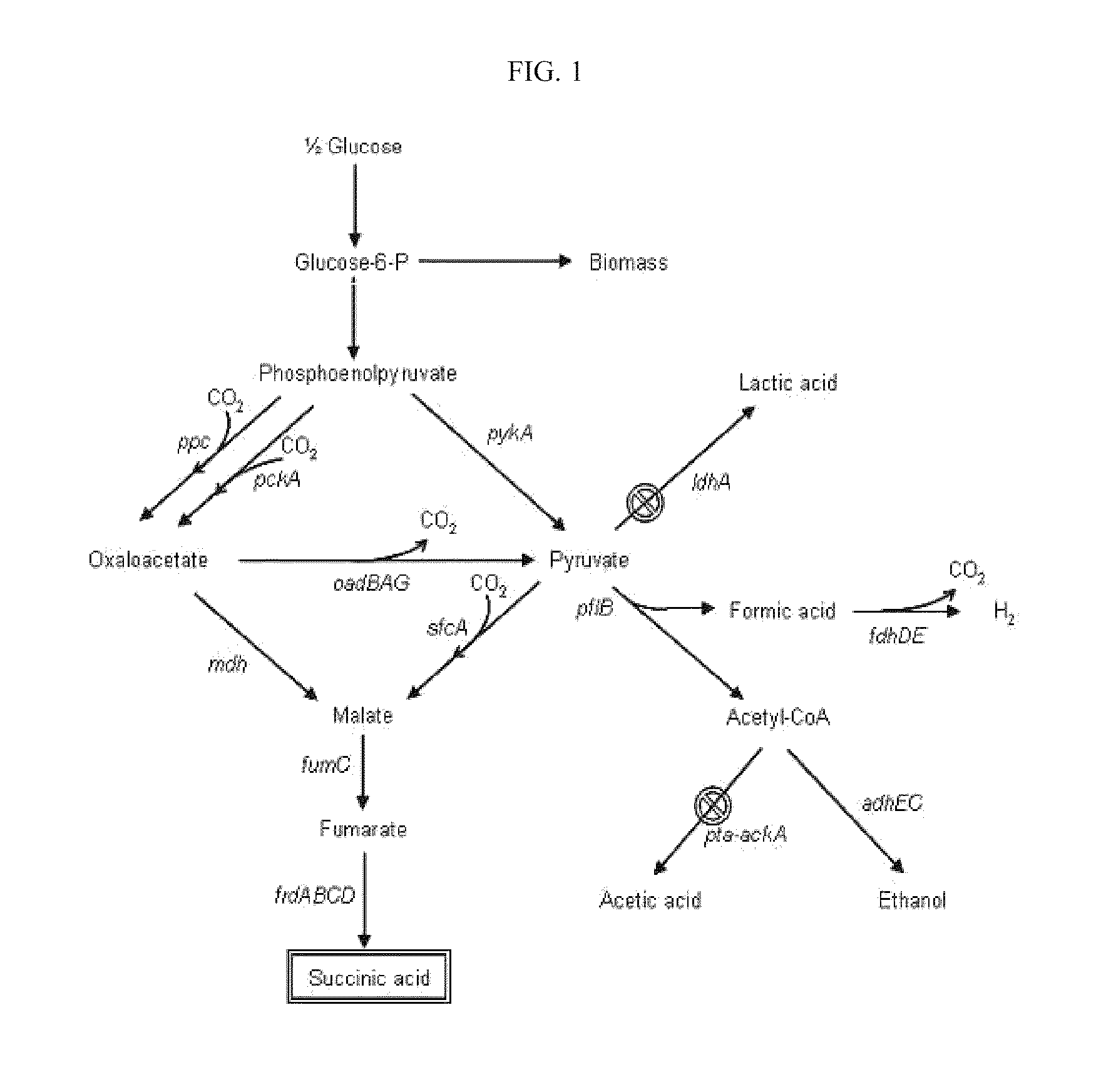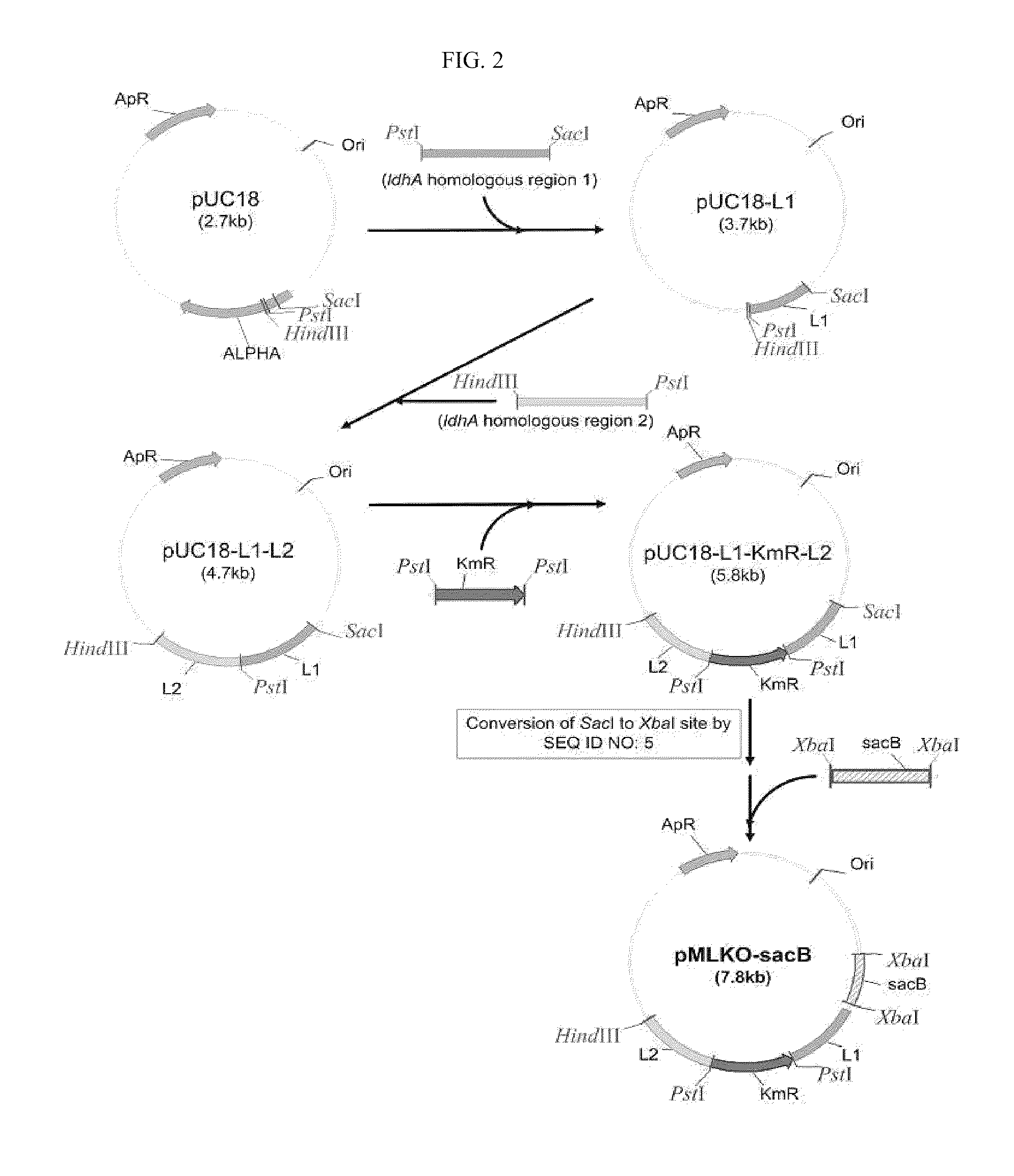Engineered microorganism producing homo-succinic acid and method for preparing succinic acid using the same
a technology of homo-succinic acid and microorganisms, which is applied in the field of mutant microorganisms, can solve the problems of large amount of hazardous waste, waste gas, effluent, etc., and achieve the effect of high growth rate and succinic acid productivity and high yield
- Summary
- Abstract
- Description
- Claims
- Application Information
AI Technical Summary
Benefits of technology
Problems solved by technology
Method used
Image
Examples
example 1
Construction of ldhA Disruption Vector (pMLKO-sacB)
[0049]In order to disrupt a lactate dehydrogenase gene (ldhA) in the genome of a succinic acid-producing microorganism by homologous recombination, a gene exchange vector was constructed in the following manner. First, the genomic DNA of M. succiniciproducens MBEL55E (KCTC 0769BP), as a template, was subjected to PCR using primers set forth in SEQ ID NO: 1 and SEQ ID NO: 2 below, and then, the obtained PCR fragment containing ldhA-homologous region 1 (L1) was cut with SacI and PstI and introduced into pUC18 vector (New England Biolabs, Inc., USA), thereby constructing pUC18-L1.
[0050]
SEQ ID NO: 1: 5′-CAGTGAAGGAGCTCCGTAACGCATCCGCCGSEQ ID NO: 2: 5′-CTTTATCGAATCTGCAGGCGGTTTCCAAAA
[0051]In addition, the genomic DNA of M. succiniciproducens MBEL55E (KCTC 0769BP), as a template, was subjected to PCR using primers set forth in SEQ ID NO: 3 and SEQ ID NO: 4 below, and then, the obtained PCR fragment containing ldhA-homologous region 2 (L2) wa...
example 2
Construction of M. succiniciproducens LK Strain
[0057]A mutant strain was constructed by disrupting ldhA gene in the genome of M. succiniciproducens MBEL55E (KCTC0769BP) using pMLKO-sacB constructed in Example 1 as a genetic exchange vector for disrupting ldhA gene (FIG. 3).
[0058]In other words, M. succiniciproducens MBEL55E (KCTC0769BP) was plated on LB-glucose agar medium containing 10 g / L of glucose, and cultured at 37° C. for 36 hours. The colony formed was inoculated in 10 ml of LB-glucose liquid medium, and cultured for 12 hours. 1% of the culture broth, which had been sufficiently grown, was inoculated in 100 ml of LB-glucose liquid medium, and cultured in a shaking incubator at 200 rpm and 37° C.
[0059]When the culture broth reached an OD600 of about 0.3-0.4 after 4˜5 hours, it was centrifuged at 4° C. and 4,500 rpm for 20 minutes to collect cells. Then, the cells were resuspended in 200 ml of 10% glycerol solution at 4° C. The suspension was centrifuged at 4° C. and 5,500 rpm...
example 3
Construction of Gene Exchange Vector (pPTA-sacB) for the Disruption of pta and ackA
[0068]In order to disrupt pta and ackA in the genome of M. succiniciproducens LK strain by homologous recombination, a genetic exchange vector was constructed in the following manner. A vector pKmobsacB containing a sacB gene, as a template, was subjected to PCR using primers set forth in SEQ ID NO: 12 and SEQ ID NO: 13. The resulting sacB product was cut with PstI and BamHI and inserted into pUC19 (Stratagene Cloning Systems. USA), thereby constructing pUC19-sacB (FIG. 4).
[0069]
SEQ ID NO: 12: 5′-AGCGGATCCCCTTCTATCGCCTTCTTGACGSEQ ID NO: 13: 5′-GTCCTGCAGGGCTACAAAATCACGGGCGTC
[0070]Meanwhile, the genomic DNA of M. succiniciproducens LK as a template was subjected to PCR using primers set forth in SEQ ID NO: 14 and SEQ ID NO: 15, and the resulting PCR fragment containing pta-ackA homologous region 1 was cut with XbaI and BamHI. In addition, the genomic DNA of M. succiniciproducens LK as a template was sub...
PUM
| Property | Measurement | Unit |
|---|---|---|
| concentration | aaaaa | aaaaa |
| concentration | aaaaa | aaaaa |
| concentration | aaaaa | aaaaa |
Abstract
Description
Claims
Application Information
 Login to View More
Login to View More - R&D
- Intellectual Property
- Life Sciences
- Materials
- Tech Scout
- Unparalleled Data Quality
- Higher Quality Content
- 60% Fewer Hallucinations
Browse by: Latest US Patents, China's latest patents, Technical Efficacy Thesaurus, Application Domain, Technology Topic, Popular Technical Reports.
© 2025 PatSnap. All rights reserved.Legal|Privacy policy|Modern Slavery Act Transparency Statement|Sitemap|About US| Contact US: help@patsnap.com



